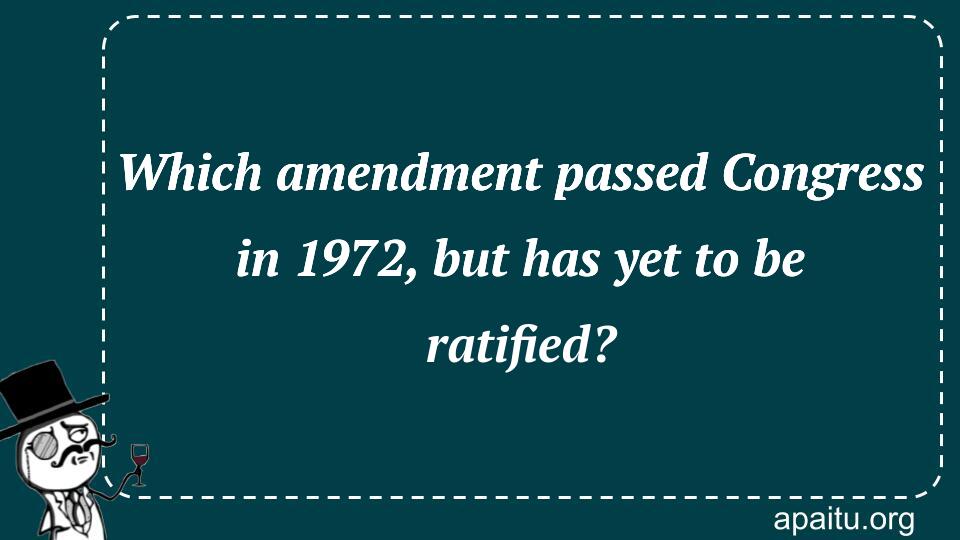Question
Here is the question : WHICH AMENDMENT PASSED CONGRESS IN 1972, BUT HAS YET TO BE RATIFIED?
Option
Here is the option for the question :
- Equal Rights Amendment
- Women’s Suffrage Amendment
- Voting Rights Amendment
- Income Tax Amendment
The Answer:
And, the answer for the the question is :
Explanation:
Although the Equal Rights Amendment was first proposed in 1923, it wasn’t adopted by Congress until 1972. It ensures that all people have equal legal rights regardless of their gender. However, the amendment’s controversy prevented several states from ratifying it. Nearly a century after it was first introduced, it is still unratified.

The Equal Rights Amendment (ERA), a proposed amendment to the United States Constitution, passed Congress in 1972 but has yet to be ratified. The ERA aimed to guarantee equal rights under the law regardless of a person’s sex, ensuring gender equality and promoting women’s rights. Despite its initial passage in Congress, the amendment faced significant challenges and has yet to be added to the Constitution, sparking ongoing debates and discussions surrounding its importance and implications.
The roots of the Equal Rights Amendment can be traced back to the early 20th century when the women’s suffrage movement fought for the right to vote. While the 19th Amendment, granting women’s suffrage, was ratified in 1920, the quest for gender equality continued. The ERA emerged as a response to the persistent discrimination and disparities faced by women in various aspects of life.
The text of the proposed amendment is concise yet powerful: “Equality of rights under the law shall not be denied or abridged by the United States or by any state on account of sex.” The ERA sought to address the legal and societal barriers that hindered women’s progress and denied them equal opportunities. It aimed to eliminate gender-based discrimination in areas such as employment, education, and public accommodations.
Following its passage in Congress in 1972, the ERA required ratification by three-fourths (38) of the states to become a part of the Constitution. However, the amendment faced considerable opposition and encountered challenges during the ratification process. A deadline was set for ratification, which was later extended but ultimately expired in 1982 without achieving the required number of ratifications.
Opponents of the ERA raised concerns regarding potential unintended consequences and the impact on traditional gender roles and family dynamics. Some argued that the ERA could undermine protective legislation for women, such as pregnancy-related benefits and alimony. Others expressed concerns about its potential effect on issues like same-sex marriage and the military draft.
the Equal Rights Amendment has had a lasting impact on the advancement of women’s rights. It raised public awareness about gender inequality and sparked important conversations about the need for legal protections against discrimination. The ERA paved the way for subsequent legislation and court decisions that furthered women’s rights and challenged discriminatory practices.
Over the years, efforts to revive and ratify the ERA have persisted. Some states have continued to push for ratification, while others have sought to rescind their previous ratifications. Advocates argue that the ERA remains relevant in addressing ongoing gender disparities and ensuring equal treatment for all individuals, regardless of sex.
The debate surrounding the Equal Rights Amendment reflects broader discussions about gender equality and the r